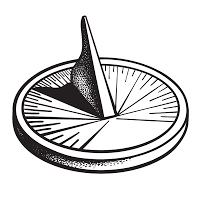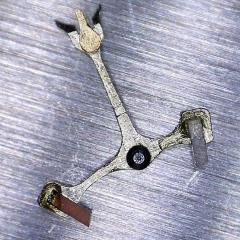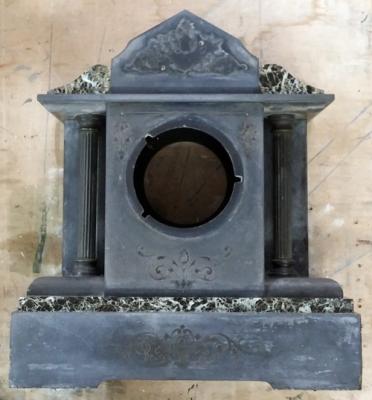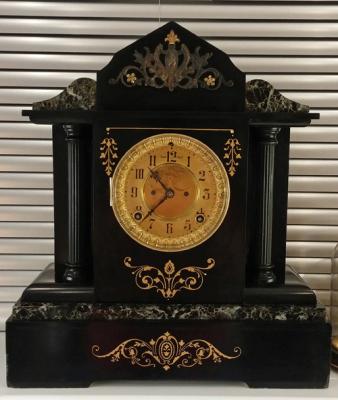Leaderboard
Popular Content
Showing content with the highest reputation on 11/01/21 in all areas
-
A unfortunate problem with watches with movable banking pins or just about anything else that moves in the watch is that people like to move things.2 points
-
If it's pulling out with that Locite then you really need to make a new pivot with a better mechanical fit. How deep did you drill? 3x diameter would be a minimum. Also, the parts need to be very clean when using Loctite, acetone works well.2 points
-
It looks like a hairspring issue but did you poise the balance after fitting the new balance.2 points
-
Is it possible that you are trapping air behind the pivot when you push it in? This has somehow to be avoided, but with Loctite around the pivot it cannot escape. Best is a mild interference fit without Loctite that leaves the air some way of escape. Then some Loctite 638 applied to the pivot base. It will fill any residual gap. Incidentally I have found that drilling for pivots is best done with an end mill after centering with a centre tool. https://drillbitsunlimited.com/Default.aspx sell suitable end mills. They 'mill' in much faster than a drill bit.1 point
-
You'll notice I asked two separate questions apparently both can't be answered? The reason I asked for the size was? One of the ways you can identify watches is with their setting components. Typically you look in the bestfit book but that's only good for the watches in the 60s or basically worthless for watches like this. But I have another book that's considerably older and it would've been a long shot anyway but it was worth a look. So in the absence of the size I just looked for the name and I never saw the name. To understand the problem I have a link below. It's an interesting website for looking up watches I'm going to quote something off the webpage. "In the past, especially between 1930 and 1970 more than 10.000 different movements were made, some in a million copies." Then the problem with the quoted section is it starts in the 30s it doesn't go back far enough. Which means the quantity of various watches is way too small. Or basically and watch repair we end up with lots of movements with zero information. They typically only show up in the parts book if there were made in big enough quantities that somebody would actually have spare parts. Then there is the other problem history of watch companies is very lacking. Even really big companies that have been in business for a long time nobody cared about their history until after they were gone. Trying to find history of companies of the past it's quite a challenge even a relatively modern companies. https://17jewels.info/ Yes that's a common problem names it still exist which may or may not be tied to the original company but basically in name only. The only thing left of the company that was valuable was the name and it's out there somewhere. So if you can trace the name to A company the company probably has zero to do with watches are just living off the name being made with Chinese movements. But what makes this company interesting is providing you don't pay attention to the fine print. It appears to be the current family? If you pay attention to the fine print is the current family living off their name and they probably have zero history on anything of the past other than the name is valuable. In other words is one of the quantity of movements that exist out there that as far as history and paperwork goes it's nonexistent? On the other hand definitely has a familiar look as that's a standard layout for a watch of that time. To let you get away from looking for the name and basically just look for movements you may ask he find a picture of the dial side.1 point
-
Change in beat error when regulating is due to imperfect terminal curve and perfect terminal curve is a rare bird.1 point
-
Hi @WatchMaker, They do seem rather similar don’t they? I think I may go ahead and take a gamble on the eBay lot, as you say they are inexpensive to buy. That’s some fantastic research you’ve done there, I really appreciate your help!1 point
-
What happened with other old brands is that the original company may have ceased doing any business, perhaps gone bankrupt, disposed of any material goods and records many decades ago but someone still have the ownership of the brand. This last asset is then sold or granted to use to someone else, often there is capital from the Far East in these operations. At least in this case they appear to be producing in Switzerland rather than in China.1 point
-
It's a really nice movement. The base was almost certainly not made by Koehn but probably came from the Vallee de Joux and was finished in their workshop in Geneva (since their history says they became a manufacture in 1891), it looks typical for VdJ, and it was normal to obtain ebauches and finish them then. I don't have anything here with exactly the same setup for the setting parts, but if you keep your eyes peeled you will likely come across an image somewhere that matches. The part that's broken is the bascule in French, sometimes called the yoke or clutch lever in English. In your case it's part spring, part lever.1 point
-
It's called "watch accuracy meter" I have an Android but believe it is for iphone as well. For a free app it actually works quite well1 point
-
Thank you everyone for your help! As many of you suspected, it was indeed an issue of the hairspring running, it wasn't perfectly flat and after some adjustments it is now running great!!1 point
-
I can see by the pillars that I was wrong, these are so thick and plain as with Scandinavian movements of this type are shaped more like early longcase movements. The barrels are a give away too. The crown wheel to the verge is at a very strange angle, makes me thing someone has been at it. Thanks for the photos. jdm what made your chap say it was Austrian.1 point
-
If you post photos from your actual watch, it will make diagnosing the problem much easier.1 point
-
Also check balance end-shake as this can interfere with how the roller interfaces with the lever which can cause timing oddities in certain positions. And the roller itself if it's a replacement.1 point
-
Wow, good eyes. I could see it once you told me where to look, but I would have never spotted it otherwise. The OP owes you a beer1 point
-
A 3A fuse is safer. 250V x 3A = 750W, I doubt it would ever use that much power unless it's faulty.1 point
-
I guess that helps! I'll get back to you, or hire an electrical engineer, should I ever buy one of these. Got my 70 year old ELMA, and I wouldn't be surprised if it runs for another 70 years!1 point
-
According the photo, the 1st (over-)coil lies outside the regulator pins!1 point
-
Dial side up, hairspring weight pulls toward balance cock, touches there (as others said) and makes it run fast.1 point
-
I have just had a look at the photo after magnifying the photo and the hairspring is't right it is all gathered at one side. It should have even gaps between coils all the way around. That's the cause of your problem.1 point
-
The hairspring isn't centered, that could be the reason it looks so out of beat. If it isn't centered then there is a good chance it isn't flat too, try to get the hairspring sorted out as a start. It would be nice to see a pic of the balance itself from the side, top and bottom.1 point
-
@Nucejoethat is one theory but my uninformed guess is that it is low amp and barely on the threshold of being readable OR some amplitude but hairspring is bouncing off centre wheel and getting effectively shortened and increasing the rate. Could be neither though, I am just spitballing.1 point
-
I can't really see if it's an overcoil - I think it is from the position of the stud. But if it is one thing to check is that the overcoil is not hitting the centre wheel when the watch is dial up. It could be that you have the stud depthed incorrectly, which may pull the overcoil toward the centre wheel. Another thing is that the hairsprings on these tend to be super soft, and can be distorted if you don't support the balance wheel when removing it. Just the weight of the wheel can put the hairspring way out of wack. You may want to remove the hairspring, stud it in the cock, and just check that it's flat.1 point
-
Just looking at the movement shot, I am wondering if you placed the roller in the same position you found it. Usually the impulse jewel is at 90 degrees to the balance arms. If that was the case here the watch would be very out of beat, perhaps to the point that it wouldn't run at all. Just something to check, although not really germane to this problem. It would also throw off the poise, to Nuce's point. I can't really read the second timegrapher shot - it looks to me like it's barely running at all, more than a case of it running fast. My guess is that the amplitude is dropping a lot on that side, which is not really a question of the rate but more of the watch stalling out on that side. My guess is the hairspring or something else is rubbing.1 point
-
Variation as large as your saying , points to hairspring issue or something rubbing , hairspring rubbing, pivot shoulder seat runbbing due to unadjusted end shake or defective end stones, perhaps even defective pivot end of the new staff. I noticed you made no mention of having poised the balance or balance complete, though poise issue would not cause large variation between FU & FD positions. Regs1 point
-
Just a quick update. The clock originally looked like this after cleaning off the years of accumulated grime: After a fair bit of trial and error I used the following: 3 coats Liberon Ebony Spirit Woodstain, 2 coats Slate Oil, 1 coat Renaissance micro-crystalline wax (thanks for the tip CB), 2 coats Painters Touch Acrylic Gold paint (from Homebase) to detail, put on liberally with brush & scraped back with razor blade between coats. a final 2 coats Renaissance micro-crystalline wax. and this is what it look like now: My initial trials with oil worked well at first but the pale patchy areas came back to haunt me after a couple of days. Tried Priorys Black Slate Renovator without success. The spirit woodstain has worked well, its not perfect but acceptable. Some surface corrosion is noticeable at certain light angles & as Oldhippy rightly states the only way to get rid of this would be to pull it apart, grind & polish. The pale patchy areas are now well masked. The Slate Oil appears to be none other than boiled linseed oil & was slower to dry than the original Floor Oil, If I did one again I would use Floor Oil.1 point














